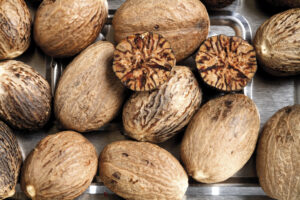Horror thrives on the unknown—the creeping suspicion that something is wrong, even if you can’t explain why. Few series exploit this dread as masterfully as The Mandela Catalogue, an analog horror web series by Alex Kister that has haunted viewers since 2021.
Blending religious terror, psychological manipulation, and uncanny doppelgängers, it doesn’t rely on cheap jump scares. Instead, it burrows into your subconscious, making you question reality itself.
But what makes it so uniquely terrifying? And why does it linger in your mind long after watching?
The Horror of the Almost-Human
At the heart of The Mandela Catalogue are the Alternates—entities that look almost human but are just wrong enough to trigger deep-seated fear. They mimic voices, twist familiar faces, and exploit human vulnerability.
Unlike traditional monsters, they don’t just kill you. They break you psychologically, convincing victims that:
- They are being “rescued” (while being led to their doom).
- They are alone (even when surrounded by people).
- They were never truly human to begin with.
This plays into the concept of Metaphysical Awareness Disorder (M.A.D.)—the moment a person realizes they’re interacting with an Alternate. By then, it’s often too late.
Biblical Horror: When Angels Become Monsters
Most horror stories use demons or ghosts as antagonists. The Mandela Catalogue does something far more disturbing—it corrupts angels.
- Gabriel, the holy messenger, is reimagined as a malevolent force broadcasting distorted commandments.
- The Nativity scene is twisted into something unholy (see Vol. 333’s demonic infant).
- The concept of “The Overthrone” suggests that God Himself was replaced by something far worse.
This subversion of religious safety is what makes the horror so potent. If even divine protection is an illusion, what hope do humans have?
The Mandela Catalogue Glossary: Decoding the Fear
To fully grasp the series, here’s a breakdown of key terms:
| Term | Meaning |
|---|---|
| Alternate | Shapeshifting entities that replace humans, driving them to paranoia or suicide. |
| M.A.D. | “Metaphysical Awareness Disorder”—realizing an Alternate is near, often too late. |
| T.H.I.N.K. Principle | A fake educational video teaching children to “identify” Alternates (a trap). |
| 6/12/09 Incident | The first recorded Alternate outbreak in Mandela County. |
| The Intruder | A grinning, elongated entity that mimics voices to lure victims. |
| Overthrone | The theory that Alternates have seized control of Heaven. |
Hidden Details You Might Have Missed
- TV Static = Alternate Presence
- Glitches and distortions signal an Alternate crossing into our world.
- “You Are Not Alone” Is a Lie
- Alternates isolate victims before attacking, making the phrase a cruel taunt.
- Real-Life Parallels
- The frantic 911 call in Vol. 4 mirrors actual emergency calls about home intruders, blurring fiction and reality.
Why It Stays With You
The Mandela Catalogue doesn’t just scare you—it makes you question reality. Could someone you know be an Alternate? Have you ever experienced M.A.D. without realizing it?
The series preys on fundamental fears:
- Trust (Can you believe what you see and hear?)
- Identity (Are you even you anymore?)
- Helplessness (What if there’s no escape?)
Final Thought: Are You Really Safe?
The scariest part of The Mandela Catalogue isn’t the monsters—it’s the idea that they’ve already won.
So the next time you hear a voice in the dark, ask yourself:
Is it really who you think it is?
Want More?
- Deep dive into Vol. 333’s demonic birth scene.
- Analyze the Prelude timeline for hidden lore.
- Bonus Question: Could you survive an Alternate encounter? (Spoiler: Probably not.)

